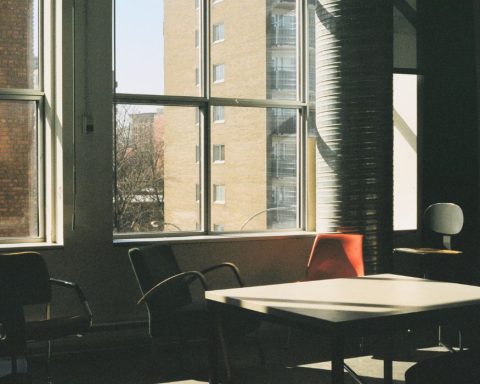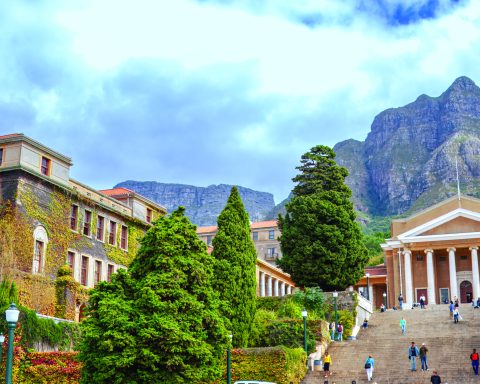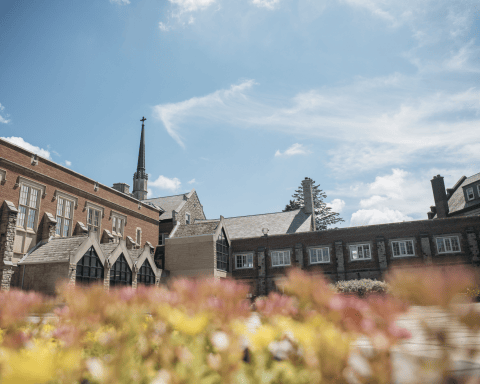The Greenest School in Canada competition is an annual event put on by the Canada Green Building Council and the Canadian Coalition for Green Schools. This year, the jury was so impressed with 2015 submissions that two winners were chosen to recognize their innovative approaches to sustainability and efforts to engage students and the local community.
1st: (Tied)
St. Marguerite d’Youville in Hamilton, Ontario
This LEED Platinum certified Ontario EcoSchool is making real efforts to bring sustainability education to its young students, from kindergarten to Grade 8, by incorporating environmentalism into the curriculum and school culture. All of the school’s environmental stewardship activities are student-driven, with energy and waste conservation as a main goal.

The core of their approach to sustainability education is the breadth of activities they participate in, which include an outdoor classroom maintained by students with emphasis on caring for the surrounding trees. The school reduces energy consumption by turning off unnecessary lighting and electrical devices during the day. Student monitors also walk around the school on the lookout for wasteful uses of energy.
The school has been able to reduce waste by 90 per cent through the implementation of major recycling and composting programs, as well as daily litterless lunches and the banning of plastic water bottles. This means the school’s total waste is just one bag of garbage per day, with the rest going into a recycling or green bin.
Among its other programs, there is a butterfly garden that encourages children to be outdoors and study nature; field trips that include visiting the local compost facility, and identifying flora and fauna in the region; and Health EcoFairs where environmental and health community leaders set up booths and help promote best practices and healthy lifestyles to students, families and the community.
1st: (Tied)
Queen Elizabeth High School in Edmonton, Alberta
This Edmonton school embodies the ideals of a green school, with its constant work to improve environmental advocacy through direct student engagement and programming. Their main educational component, called INNOVATE, is a hands-on project-based program that bridges the different curriculums, connects to the greater community, and provides research and experimental opportunities to students who are focused on solving real world problems of sustainable development.
Whether investigating a challenge, creating or inventing a solution, developing a club or business, or implementing a humanitarian initiative, the INNOVATE program gives students the time and space to pursue their environmental interests while earning high school credits. As a part of this program, students have twice presented at the annual COP UN Climate Change Conferences to youth delegates – in Doha, Qatar (2012), and Lima, Peru (2014).
Queen Elizabeth also embodies the ideals of the green building movement. The school has installed smart meters to measure energy consumption in real time. Light sensors are used to achieve a balance between natural sunlight and artificial lighting. It was the first school in Edmonton to install solar PV modules, and having noticed rising levels of CO2 in the building during the day, the school integrated planter boxes, green walls and aquaponics systems into student spaces to manage air quality.
2nd:
Lord Shaughnessy High School Career and Technology Centre in Calgary, Alberta
The Centre scored big points for its strong community engagement activities. These include an Energy and Environmental Innovations program, which offers courses to students across Calgary, and a citywide sustainability conference hosted annually. The Centre is also helping to develop a local greenspace into an urban agricultural area. It has worked hard to dramatically reduce waste and has installed solar panels to offset a major portion of electricity demand.
3nd:
Kitchener-Waterloo Collegiate and Vocational School in Kitchener, Ontario
This 160-year-old school proves that any school can adapt and thrive in a sustainable way. Emphasizing environmental engagement and education to its population of over 1,100 students, the school has an urban farmyard, a greenhouse, a green roof and living wall, as well as community and sculpture gardens. A rainwater-harvesting project has also been used as part of a community demonstration project.





